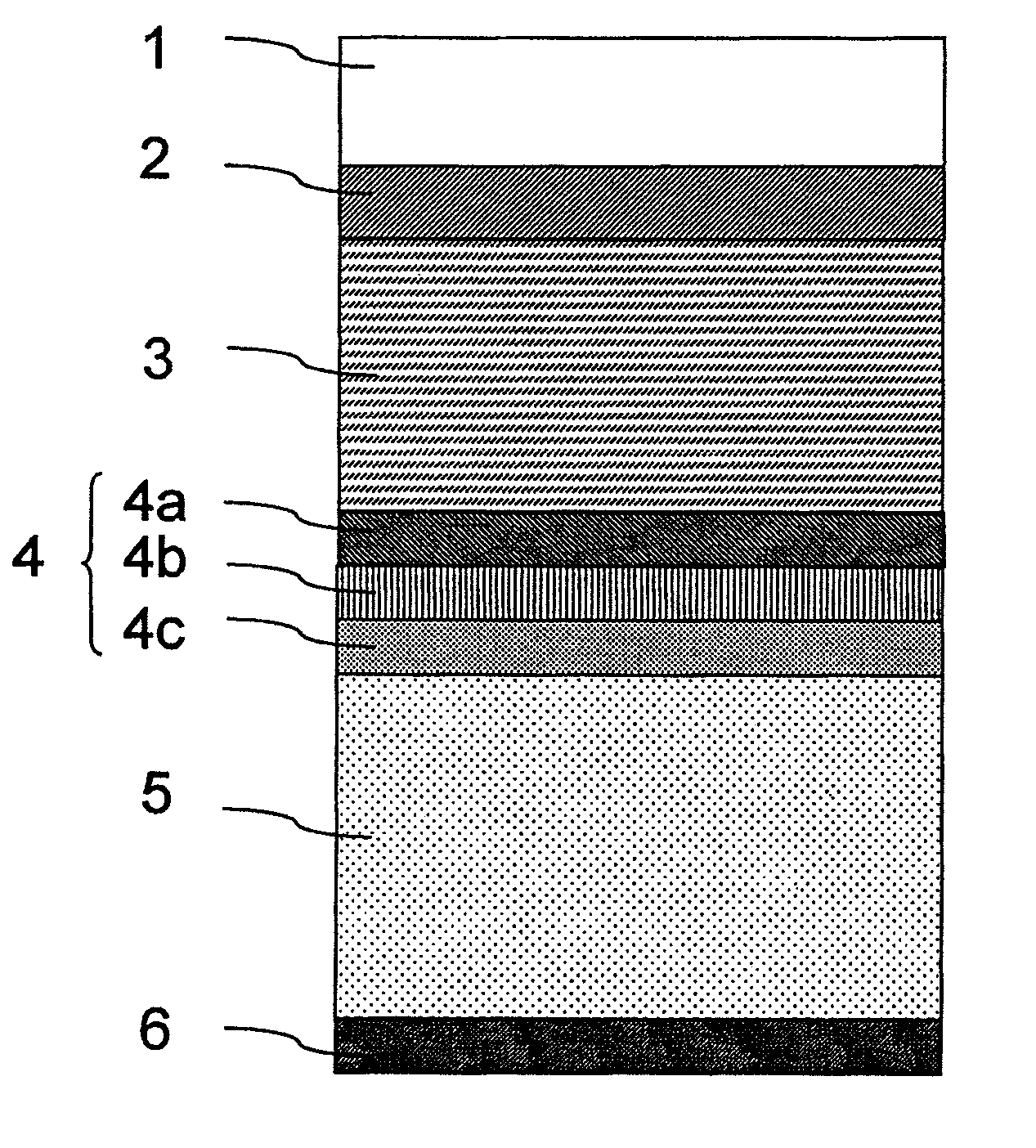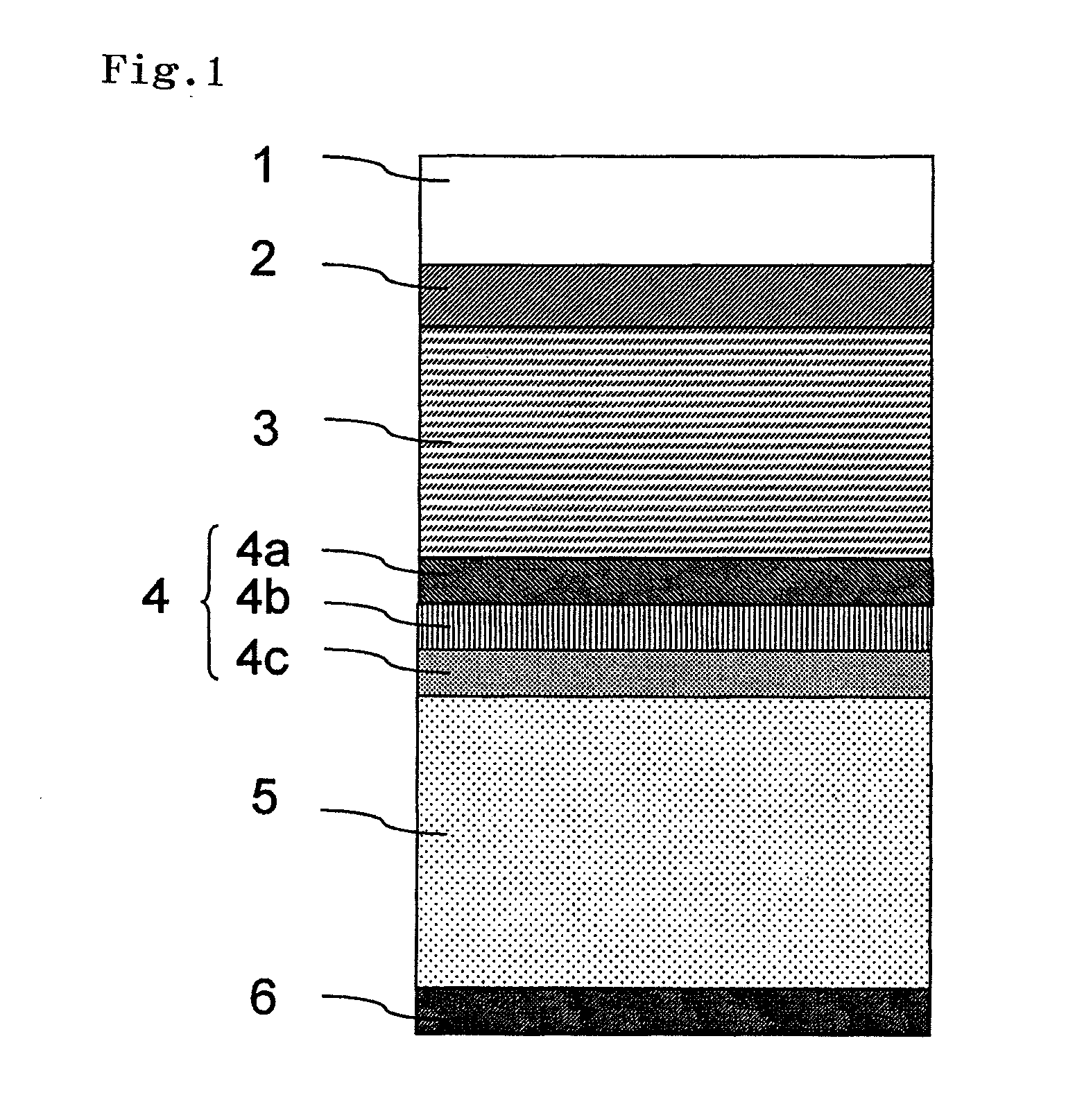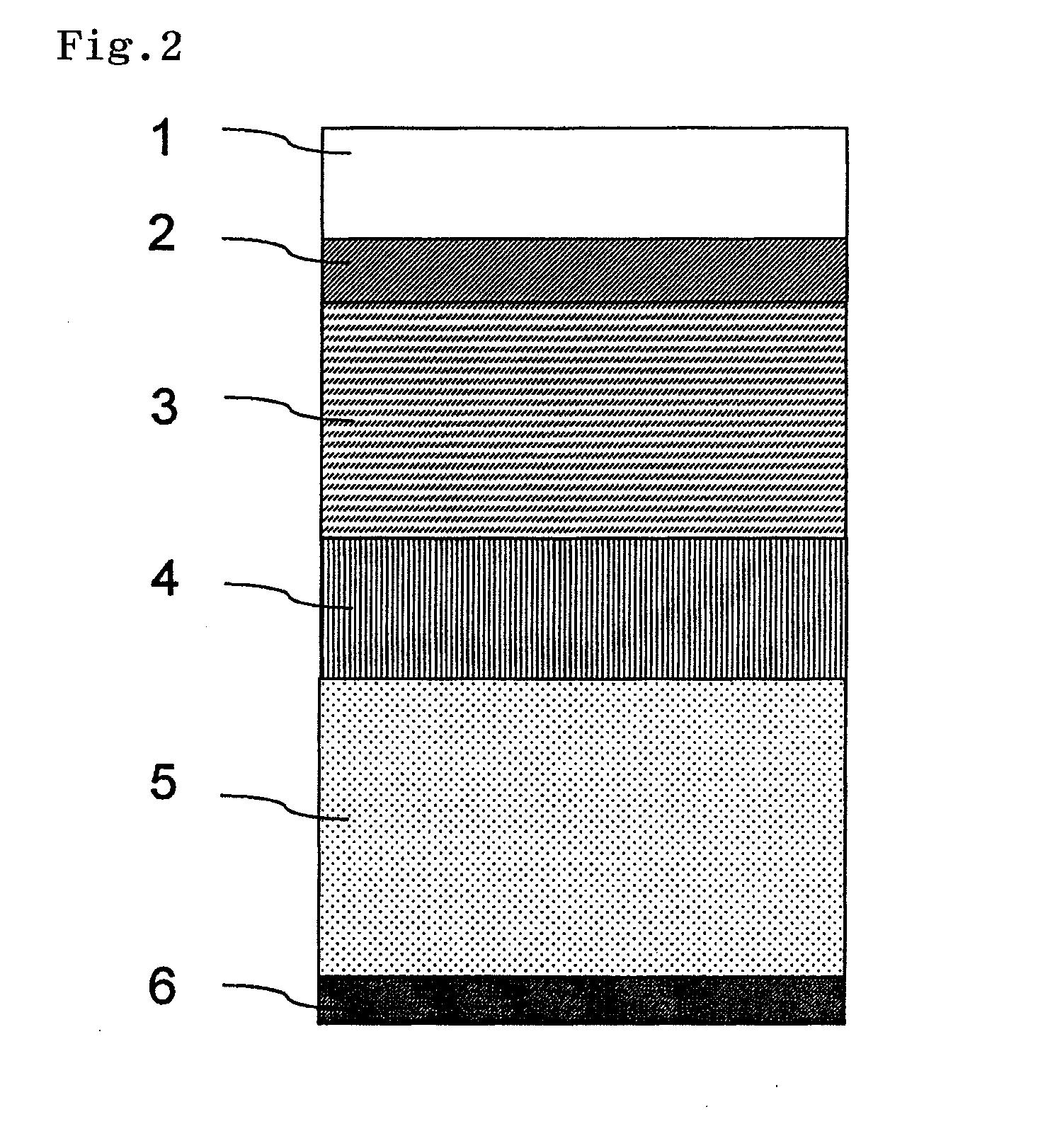Thin-film photoelectric conversion device
a conversion device and thin film technology, applied in the field of thin film photoelectric conversion devices, can solve the problems of insufficient refractive index difference, limited reflection properties of the entire multi-junction photoelectric conversion device, and insufficient satisfactory reflection properties, so as to improve the reflection properties of the front photoelectric conversion unit, improve the film quality and the transmission of the carbon layer, and improve the refractive index difference between the interlayer and the silicon layer.
- Summary
- Abstract
- Description
- Claims
- Application Information
AI Technical Summary
Benefits of technology
Problems solved by technology
Method used
Image
Examples
example 1
[0132]A multi-junction silicon solar cell of Example 1, which corresponds to a first embodiment described with reference to FIG. 1, was produced. Glass was used for a transparent substrate 1 and SnO2 was used for a transparent electrode layer 2. The film thickness of the transparent electrode layer 2 was 800 nm, the sheet resistance was 10Ω / □, and the haze ratio was 15 to 20%. A boron-doped p-type silicon carbide (SiC) layer, an undoped amorphous silicon photoelectric conversion layer, and a phosphorus-doped n-type μc-Si layer having thicknesses of 10 nm, 300 nm, and 20 nm, respectively were formed thereon by a plasma enhanced CVD method. Thus, a pin junction amorphous silicon photoelectric conversion unit 3 as a front photoelectric conversion unit was formed.
[0133]Further, an interlayer 4 was formed on the amorphous silicon photoelectric conversion unit 3. First, a substrate with the amorphous silicon photoelectric conversion unit 3 formed was taken out of the plasma enhanced CVD d...
example 2
[0138]A multi-junction silicon solar cell of Example 2, which corresponds to a first embodiment described with reference to FIG. 1, was produced. The solar cell of Example 2 corresponds to a first embodiment described by referring to FIG. 1. Glass was used for a transparent substrate 1 and SnO2 was used for a transparent electrode layer 2. The film thickness of the transparent electrode layer 2 was 800 nm, the sheet resistance was 10Ω / □, and the haze ratio was 15 to 20%.
[0139]A boron-doped p-type silicon carbide (SiC) layer, an undoped amorphous silicon photoelectric conversion layer, and a phosphorus-doped n-type μc-Si layer having thicknesses of 10 nm, 300 nm, and 20 nm, respectively were formed thereon by a plasma enhanced CVD method. Thus, a pin junction amorphous silicon photoelectric conversion unit 3 as a front photoelectric conversion unit was formed.
[0140]Further, an interlayer 4 was formed on the amorphous silicon photoelectric conversion unit 3. First, a substrate with th...
example 3
[0145]A multi-junction thin-film silicon solar cell with a configuration shown in FIG. 1 was produced as Example 3. This Example was different from Example 1 only in the forming conditions of the carbon layer 4b in the interlayer 4. More specifically, in the Example 3, the substrate was placed in a plasma enhanced CVD device for forming a carbon layer 4b by a CVD method. A carbon film having a film thickness of 1000 Å was formed by using a plasma enhanced CVD device. Methane of 10 sccm (a methane concentration of 100% by volume) and hydrogen of 200 sccm were used as a raw material, a substrate temperature was 150° C., and a discharge power was 200 W.
[0146]A refractive index of the carbon layer 4b was measured by a spectroscopic ellipsometry method, and was determined to be 1.90 at a wavelength of 600 nm. In addition, the spectrum of the carbon layer was measured by using an FT-IR spectrometer. A peak derived from C—H stretching vibration was observed at approximately 2920 cm−2 in th...
PUM
| Property | Measurement | Unit |
|---|---|---|
| refractive index | aaaaa | aaaaa |
| refractive index | aaaaa | aaaaa |
| refractive index | aaaaa | aaaaa |
Abstract
Description
Claims
Application Information
 Login to View More
Login to View More - R&D
- Intellectual Property
- Life Sciences
- Materials
- Tech Scout
- Unparalleled Data Quality
- Higher Quality Content
- 60% Fewer Hallucinations
Browse by: Latest US Patents, China's latest patents, Technical Efficacy Thesaurus, Application Domain, Technology Topic, Popular Technical Reports.
© 2025 PatSnap. All rights reserved.Legal|Privacy policy|Modern Slavery Act Transparency Statement|Sitemap|About US| Contact US: help@patsnap.com



